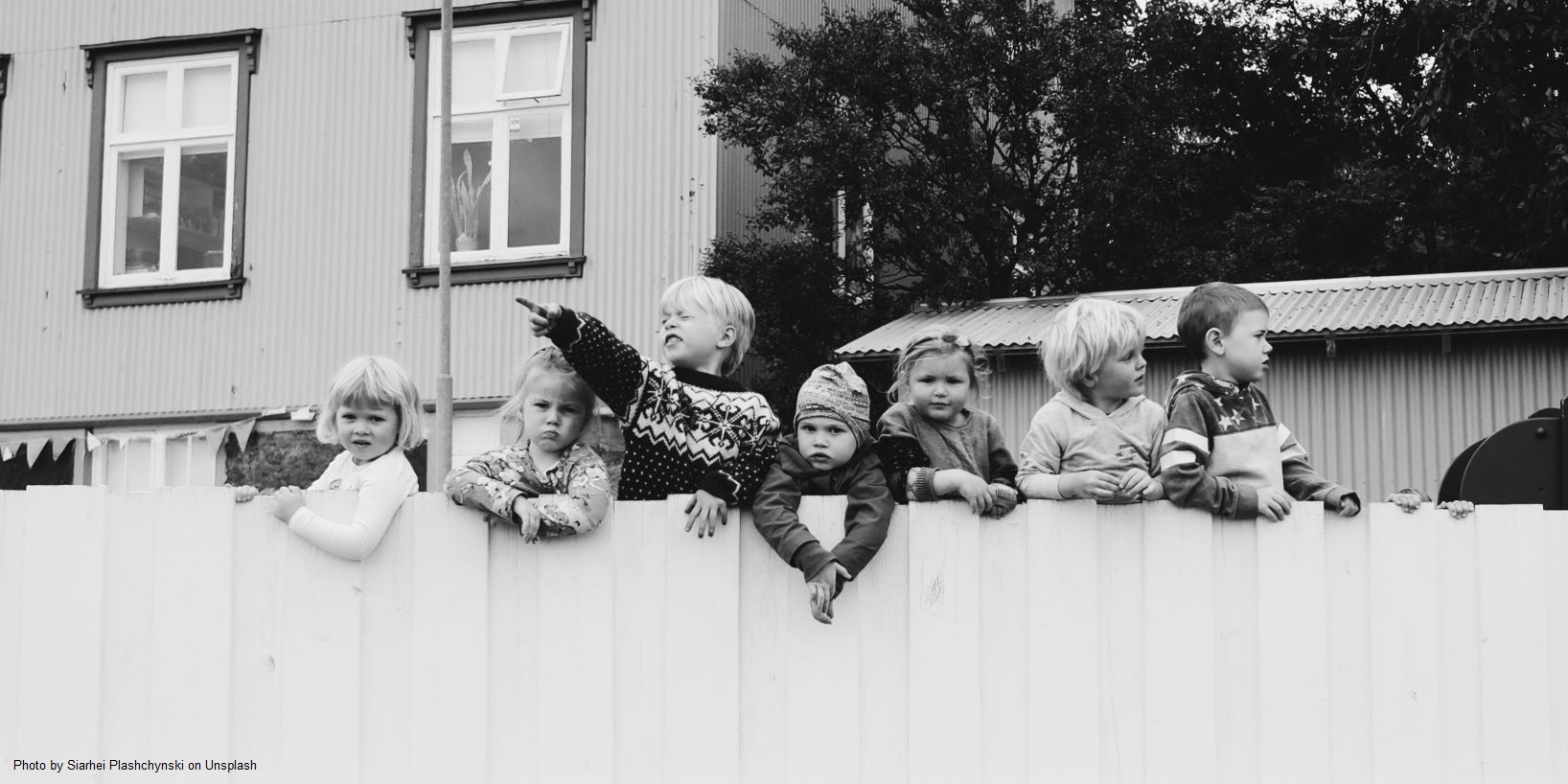Author: webadmin
“Active parent”: Addressing Labor Market Disadvantages of Mothers in Poland

In 2023 only one out of four children aged 0-3 years was covered by the Polish system of formal childcare. Traditional social norms with regard to provision of childcare at home, together with high costs of existing formal and informal childcare arrangements constitute important constraints with regard to labor market participation among mothers with the youngest children. While labor market activity rate among women aged 25-49 years stands at 84 percent overall, it is more than 20 percentage points lower for mothers with children aged 1-3 years. In this policy brief we provide an overview and an evaluation of “Active parent”, a recently introduced policy aimed at supporting earlier return to work after birth among mothers in Poland. We argue that the success of the program will be strongly determined by the extent to which it manages to stimulate growth of high-quality formal childcare for those aged 0-3 in the next few years.
Gender Gap in Life Expectancy in Poland

The gender gap in life expectancy in Poland is much wider compared to most of the other members of the European Union, including members with a common socialist past. This wide gap has not changed substantially over the past 34 years, despite the success of the economic transition in Poland and steady growth in the overall life expectancy from 71 years in 1990 to 76 years in 2021. The disparities between men and women in Poland are particularly dramatic when examining the propensity to engage in risk-taking and hazardous activities or taking up addictions. The most serious consequence of these behaviours are excessive numbers of deaths, particularly among men, that could have been prevented. It seems clear that preventive health campaigns need to be improved and extended in Poland and that more needs to be done with a specific focus on gender disparities.
The full Report including a general overview of the socio-economic implications of the gender gap in longevity by Lev Lvovsky (BEROC) is available here.
Reports from Belarus, Georgia and Latvia are available in English here.
Zasiłek rodzinny: niezmiennie od 2016 roku

Znaczenie zasiłku rodzinnego wraz z dodatkami jako mechanizmu wsparcia rodzin z dziećmi zdecydowanie zmalało po wprowadzeniu programu Rodzina 500+. W ostatnich latach wprowadzono ponadto inne programy wsparcia skierowane do rodzin z dziećmi: świadczenie „Dobry start 300+”, rodzinny kapitał opiekuńczy, dofinansowanie opieki w żłobkach, a od października rodzice dzieci w wieku 12-35 miesięcy będą mogli liczyć na wsparcie nawet do 1500 zł miesięcznie w ramach programu „Aktywny rodzic”. Wartość zasiłku rodzinnego z dodatkami względem PKB spadła w latach 2010-2022 z 0,36% do 0,08%. W tym okresie liczba rodzin otrzymujących zasiłek spadła z 1427 tys. do 553 tys. W niniejszym komentarzu analizujemy, w jakim stopniu spadek ten jest efektem rosnących dochodów rodzin, a w jakim – konsekwencją mrożenia progów dochodowych uprawniających do otrzymywania zasiłku.
Komentarz CenEA 20/08/2024 “Zasiłek rodzinny: niezmiennie od 2016 roku”
Aktywnie w pracy, żłobku i w domu: finansowe konsekwencje programu „Aktywny rodzic”

Program „Aktywny rodzic” wejdzie w życie 01.10.2024 roku i trafi do rodzin z dziećmi w wieku 12-35 miesięcy. Składać się na niego będą trzy formy wsparcia: „aktywni rodzice w pracy”, „aktywnie w żłobku” i „aktywnie w domu”. W niniejszym Komentarzu przedstawiono analizę konsekwencji wprowadzenia poszczególnych elementów programu “Aktywny rodzic” przy założeniu zarówno braku reakcji rodziców na jego wprowadzenie, jak i przykładowych zmian w ich zachowaniach względem decyzji na rynku pracy oraz zakresu korzystania z formalnej opieki na dzieckiem.
Komentarz CenEA 05/08/2024 “Aktywnie w pracy, żłobku i w domu: finansowe konsekwencje programu „Aktywny rodzic” “
Homeownership and the Perception of Material Security in Old Age (Applied Economics)

Using data from 15 European countries, the authors analyse the relationship between homeownership and material security, as measured through subjective evaluation of the likelihood of being better or worse off in the future. They find that homeowners have a higher level of material security than renters, and this association is especially strong for those living in big cities. The authors interpret the results as support for the argument that homeownership offers a very particular form of material security, which, through reduction of perceived material risks, may be behind its positive implications for well-being.
Full article is available here: Garten, C., Myck, M., & Oczkowska, M. (2024). Homeownership and the perception of material security in old age. Applied Economics, 1–13. https://doi.org/10.1080/00036846.2024.2364109
A Working Paper version is available as the IZA Discussion Paper.
A short FREE Policy Brief highlights the most important findings from the article.
Homeownership and portfolio choice in later life

The authors estimate the effect of home value on the composition of financial assets among a sample of German homeowners aged 50+. For that purpose they use a unique match of individual and regional level data. They find that home values are positively correlated with the probability of owning stocks and mutual funds and with the proportion of the portfolio invested in these assets.
The complete article can be found here: Garten, C., & Myck, M. (2024). Homeownership and portfolio choice in later life. Applied Economics Letters, 1–5. https://doi.org/10.1080/13504851.2024.2369715
Renta wdowia: zmiany w systemie wsparcia wdów i wdowców uchwalone przez Sejm RP

Przyjęta w dniu 26.07.2024 r. przez Sejm RP ustawa dotycząca wprowadzenia renty wdowiej oznacza istotne ograniczenie kosztów nowego elementu systemu wsparcia wdów i wdowców dla sektora finansów publicznych względem pierwotnej propozycji złożonej w Sejmie jako projekt obywatelski. W niniejszym Komentarzu przedstawiono analizę zmian wprowadzonych w projekcie renty wdowiej przez Sejm RP, ich wpływ na całkowity roczny koszt reformy oraz rozkład korzyści płynących z wprowadzenia zmian w systemie względem sytuacji materialnej gospodarstw wdów i wdowców.
Komentarz CenEA 30/07/2024 “Renta wdowia: nowe świadczenie uchwalone przez Sejm RP”
Komentarz stanowi kontynuację analiz prezentowanych w naszym poprzednim komentarzu, dotyczącym pierwotnej wersji projektu obywatelskiego renty wdowiej.
Reforming Financial Support in Widowhood: The Current System in Poland and Potential Reforms

We discuss the material conditions of widows and widowers compared to married couples in Poland, and analyse the degree to which the current support system to those in widowhood in Poland limits the extent of poverty among this large and growing share of the population. The analysis is set in the context of a proposed reform recently discussed in the Polish Parliament. We present the budgetary and distributional consequences of this proposal and offer an alternative scenario which limits the overall cost of the policy and directs additional resources to low income households.
This analysis is published as a FROGEE Policy Paper “Reforming Financial Support in Widowhood: The Current System in Poland and Potential Reforms”.
A brief summary is presented also in a FROGEE Policy Brief “Widowhood in Poland: Reforming the Financial Support System”.
Renta wdowia: konsekwencje proponowanych zmian w systemie wsparcia wdów i wdowców

Propozycja Lewicy w postaci renty wdowiej, przedstawiona w Sejmie 11 kwietnia 2023 r. w formie obywatelskiego projektu ustawy (Sejm RP, 2023), zakłada zmiany w sposobie zabezpieczenia materialnego wdów i wdowców po śmierci ich współmałżonka. W niniejszym Komentarzu przedstawiono analizy sytuacji życiowej wdów i wdowców w Polsce w oparciu o dane z Badania Budżetów Gospodarstw Domowych dla lat 2010-2021. Analizy te stanowią tło dla symulacji, której celem jest ilustracja potencjalnych konsekwencji proponowanej przez Lewicę reformy z punktu widzenia różnicy w sytuacji materialnej wdów przed i po śmierci współmałżonka. Prezentowane w Komentarzu symulacje obejmują też alternatywną propozycję zmiany systemu wsparcia wdów i wdowców, która skupia się na podniesieniu świadczeń osób w gorszej sytuacji materialnej.
Komentarz CenEA 27/02/2024 “Renta wdowia: konsekwencje proponowanych zmian w systemie wsparcia wdów i wdowców”
Polish Parliamentary Elections 2023: Social Transfers and the Voters the Government is Counting On

The heated election campaign preceding the October 15th election in Poland has focused on fundamental issues related to the rule of law, migration, media freedom, women’s and minority rights, climate policy as well as Poland’s role on the international arena. The election outcome will determine Poland’s role in the EU and as well as the country’s future relations with Ukraine. It will also be decisive for the direction of Polish politics and the foundations of socio-economic development for many years to come. Despite these issues, the primary worries for a substantial portion of Polish households concern the domestic challenges of increasing prices and material uncertainty. With this in mind, this Policy Brief summarizes the results of CenEA’s recent analysis, which demonstrates a clear pattern in the United Right government’s policy, that in the last four years has strongly favored older groups of the Polish population. In the 2019 elections financial support directed to families with children was a key factor in securing a second term in office for the governing coalition. It remains to be seen if the focus on older voters pays off in the same way on October 15th.

